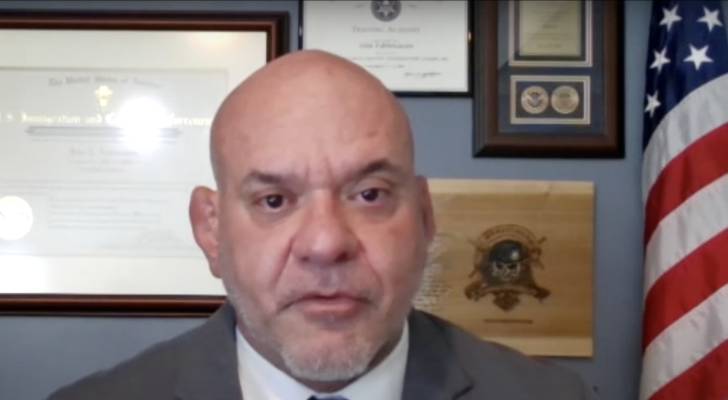I’m 31, make $117K/year, cover all household bills — yet my fiance refuses to chip in. Insists his cash is for ‘fun’ while I handle ‘responsibilities.’ Can I fix this before we get hitched?


For some, the road to marriage can look financially lopsided. Those in their 30s earning their fair share — say, more than $100,000 a year — may be used to covering 100% of their individual household expenses. However, it doesn’t typically feel good when a fiance refuses to contribute, claiming their money is only for […]
‘Cannot do business in the state of California’: Gas could spike to $8 per gallon as two major refineries shut down — and that’s not all. Are the state’s strong regulations worth the cost?


Two large California oil refineries are shutting down, triggering mounting concerns from state legislators, industry groups and many others. Assemblymember Mike A. Gipson of the Gardena district bluntly described his concern during a recent Sacramento hearing. “This is a tremendous loss,” Gipson told NBC Los Angeles, referring to the looming closure of the Phillips 66 plant […]
‘We’re not trying to punish anyone’: This LA man created a device to deter unhoused people from sleeping outside his condo complex — but some residents would like to see ‘a better solution’


In West Hollywood, a new device called the "Blue Chirper" is stirring controversy as it aims to deter homeless individuals from settling near businesses. Invented by Santa Monica resident Stephen McMahon, the device emits a chirping sound and flashes blue light when it detects motion. McMahon describes it as a non-aggressive deterrent. Don’t miss I’m […]
Colorado businesses facing $8 million in fines for employment law violations, including hiring unauthorized migrant workers — but here’s why undocumented workers are paying the highest price


Three Denver-area businesses face a combined $8 million in fines for allegedly employing unauthorized migrant workers in contravention of employment law. U.S. Immigration and Customs Enforcement (ICE) special agent Steve Cagen told Fox31 News that the fines are designed to uphold the law and “promote a culture of compliance." Don’t miss I’m 49 years old […]
This Minnesota mom of three is struggling to survive on her $37,000 annual teacher salary — and she’s not alone. Here’s how many like her are now navigating the death of the American dream


Michelle Boisjoli, a 37-year-old mom of three from St. Louis County, Minnesota, starts her days early and ends them late — not because she wants to, but because she has to. As a full-time teacher earning $37,000 a year, she’s become part of a growing demographic of working Americans who need a second job to […]
Before moving into assisted living, a Montana man racked up $18K in credit card debt — leaving his wife, 75, on the hook. Here’s what Dave Ramsey told their son to do now


When Matt from Bismarck, North Dakota, called into The Ramsey Show, he asked if his mom was responsible for his dad’s credit-card debt. His father, now in assisted living, racked up $18,000 on an American Express card. While Veterans Affairs assistance covers some of his residential care, it’s not enough to cover interest on his […]
This Baltimore renter says her unit remains ‘uninhabitable’ over a month after major flood damages 70 apartments — leaving some fighting their insurers to cover emergency housing


In mid‑June, a major water leak struck 414 Light Street, a 44‑story luxury apartment high-rise in Baltimore’s Inner Harbor neighborhood, flooding units as high as the 17th floor. Nearly a month later, about 70 apartments remain under repair — walls and flooring torn out, fans running, sealed-off sections still drying. Don’t miss I’m 49 years old […]
‘I thought maybe it was the UPS guy’: Florida family woken up by alligator scratching at their front door — here’s how to safeguard your home from gator gatecrashers


In a startling incident showcasing the unique challenges of Florida living, Courtney Beck and her family were awakened by an unexpected visitor — a large alligator attempting to enter their home. “That was just not what I was expecting,” Beck recounted to WSVN 7News in a story published May 11. “I thought maybe it was […]
I’m 36, with 2 kids, and in the middle of a divorce. I’m moving home to my parents’ for a bit to save money — and I want to invest at least $3.5K/month for my future. Where do I start?
As a 30-something, rebuilding your life post-divorce can feel daunting, especially if there are a couple of kids involved. However, if you’ve moved back in with your parents and you’re starting with no debt and a steady monthly savings goal of $3,500, you’re in an incredibly strong position. Don’t miss I’m 49 years old and […]
San Jose man has $12 million to his name while his fiancee has only $50,000 — he wants a prenup, but she has concerns. How The Ramsey Show hosts suggest he navigates this ’emotional’ process


When Derek, 36, called into The Ramsey Show, he wasn’t just looking for financial advice, but for peace of mind as well. Recently engaged and preparing to blend a family of five children, all aged between 10 to 12, Derek also brings something else into the marriage: $12 million in assets. Don’t miss I’m 49 […]
